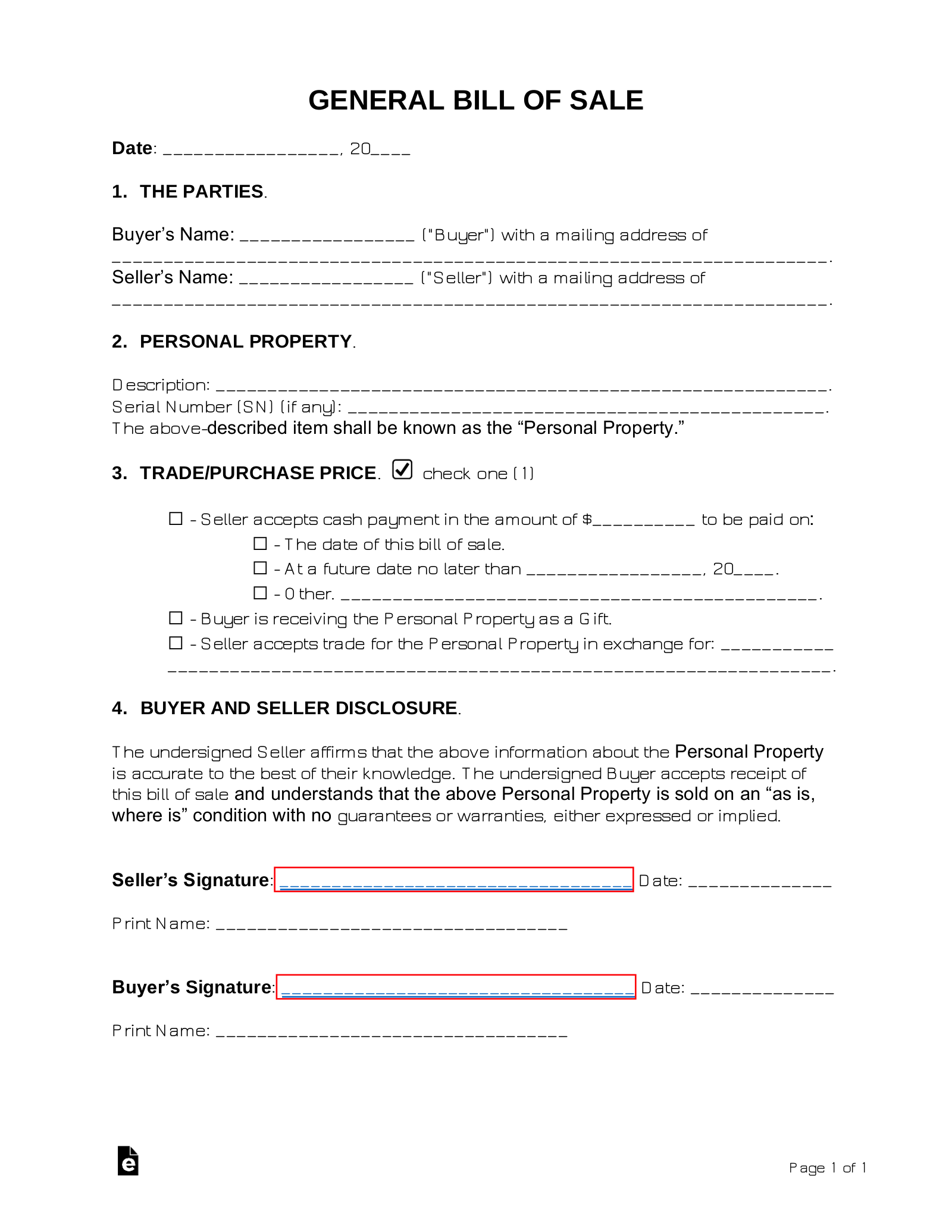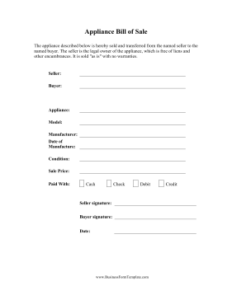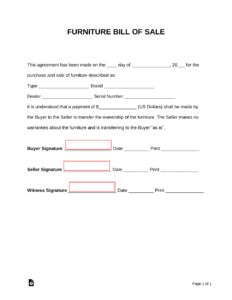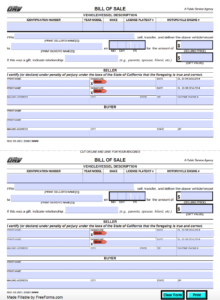Buying or selling personal property, whether it’s a vehicle, a piece of furniture, an appliance, or even a cherished collectible, can be an exciting process. However, to ensure a smooth and legally sound transfer of ownership, having the right documentation is absolutely essential. While a simple handshake might seem friendly, it leaves both parties vulnerable should any dispute arise down the line.
That’s where a bill of sale comes into play. It serves as a clear, written record of the transaction, detailing who bought what, from whom, for how much, and on what date. This document protects both the buyer and the seller by providing undeniable proof of the exchange and the agreed-upon terms, turning a potentially vague agreement into a concrete, enforceable contract.
Why You Need a Personal Property Bill of Sale
Imagine selling a valuable item, only for the buyer to later claim they never received it, or that its condition was misrepresented. Or perhaps you’re the buyer, and after handing over your money, the seller denies the sale ever took place. These scenarios, while unfortunate, are far from uncommon when transactions are not properly documented. A personal property bill of sale eliminates such ambiguities by laying out all the crucial details in black and white.

This document acts as a safeguard, offering legal protection for both parties involved. For the seller, it provides proof that the item was sold “as-is” (if specified) and that they are no longer responsible for it. For the buyer, it establishes undisputed ownership, which is vital for registration purposes (like vehicles), insurance claims, or simply to prove the item belongs to them. It prevents future disagreements about the terms of the sale, the price, or the condition of the item at the time of transfer.
Beyond legal protection, a bill of sale also serves as a comprehensive record for financial and tax purposes. If you’re dealing with high-value items, having a paper trail of your transactions can be invaluable for accounting or when filing your income taxes. It provides a clear audit trail that can be referenced years down the line if needed.
Having a robust document in place brings peace of mind to what could otherwise be a stressful transaction. It clarifies expectations, reduces misunderstandings, and fosters trust between the buyer and seller. Without it, you’re essentially operating on faith, which is rarely a sound strategy when money and property are involved.
Key Benefits of Using a Bill of Sale
- Establishes clear proof of ownership transfer.
- Protects both buyer and seller from future disputes.
- Documents the terms and conditions of the sale.
- Provides a legal record for tax or insurance purposes.
- Offers peace of mind during the transaction.
What to Include in Your Personal Property Bill of Sale Template
When preparing or utilizing a personal property bill of sale template, ensuring it contains all the necessary information is paramount. A complete document should leave no room for guesswork and clearly outline every facet of the transaction. Missing even one crucial detail could weaken its effectiveness as a legal record.
First and foremost, the document must identify both the buyer and the seller. This includes their full legal names and current addresses. This might seem obvious, but accurately identifying who the parties are is the foundation of any contract. You need to know exactly who is entering into the agreement.
Next, a thorough description of the personal property being sold is vital. Don’t just write “car” or “table.” Instead, be specific. For a vehicle, include the make, model, year, Vehicle Identification Number (VIN), and odometer reading. For other items, list the brand, model number, serial number (if applicable), color, and any distinguishing features. The more detailed the description, the less likely there will be confusion about the item in question.
Of course, the purchase price and the date of sale are non-negotiable elements. Clearly state the agreed-upon monetary amount, and specify the exact date the transaction takes place. This anchors the agreement in time and quantifies the value exchanged. You should also note the payment method, such as cash, check, or bank transfer.
Finally, and crucially, the bill of sale must include the signatures of both the buyer and the seller. Some templates may also include a space for witnesses’ signatures, though this is often optional depending on the value of the item and local regulations. A signed document indicates that both parties have read, understood, and agreed to the terms laid out within it, making it a legally binding agreement.
By carefully completing each section of a personal property bill of sale template, you’re not just filling out a form; you’re creating a robust, legally sound document that protects your interests. It’s a simple step that can save a lot of headaches and potential legal battles down the road, ensuring a smooth transition of ownership for everything from vintage furniture to power tools.



